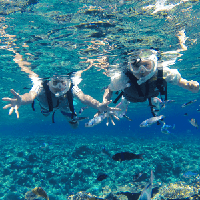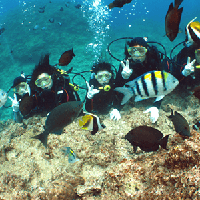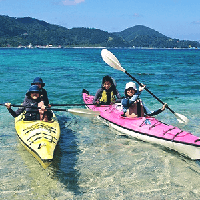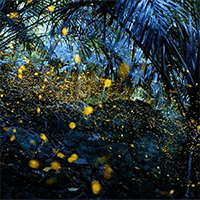- Age 6~Age 100
- 2~3 hours
- 09:00 / 10:00 / 11:00 / 13:00 / 14:00 / 15:00
"Circular agriculture", a traditional agricultural system that has been practiced in Minami Awaji City for over 100 years and is certified as a Japanese agricultural heritage, is an advanced production circulation system unique to Awaji Island that combines rice, onions, and cattle breeding. This is an SDGs experience tour where you can visit spots that are full of the characteristics of this region, such as onion huts, long-house gates, and reservoirs, and experience the secret of the deliciousness of onions through an actual onion harvesting experience. "Circular agriculture", a traditional agricultural system that has been practiced in Minami Awaji City for over 100 years, is a production circulation system unique to Awaji Island that combines rice, onions, and cattle breeding, and was certified as a Japanese agricultural heritage in 2020. In order to make effective use of limited farmland, rice and onions are grown alternately in the same place as "double cropping", but if this is repeated, the soil will eventually lose nutrients. That's where cow manure becomes a miracle cure. The rice straw produced by rice cultivation becomes cow feed and creates nutritious cow manure. This mutual support with the livestock industry keeps the farmland fertile and produces delicious, sweet onions. On this tour, you can actually harvest the delicious onions grown under this system while interacting with local residents. Afterwards, you will have the chance to try tasting sliced onions with onion dressing to really experience the sweetness of the onions you harvested! In addition, an official guide from Minami Awaji City will take you to spots packed with the characteristics of the region, such as the "nagayamon" house structure used by livestock farmers that supports this "recycling agriculture," the "onion hut" that was designed as a drying facility suited to the climate of Awaji Island, and the "irrigation ponds" that are the most densely populated in Japan as a solution to the water shortage that has long been a problem on the island. Make the most of what you can use, and continue to produce good things without waste. Experience the prototype of the SDGs that has been around for over 100 years. Experience Schedule Schedule Example (for a 10:00 start) 10:00 Meet at the parking lot (next to Oji Shrine, Kasumigo, Minami Awaji City) 10:00-10:40 Explanation of the Japanese Agricultural Heritage "Recycling Agriculture", tour of the surrounding area (visit the onion shed and cowshed while enjoying the scenery surrounded by nature) 10:40-11:20 Explanation of Awaji Island onions, onion harvesting experience 11:20-12:00 Tasting of freshly harvested onions (sliced or steamed whole), freshly squeezed milk ice cream
- Age 6~Age 100
- 2~3 hours
- 09:00 / 10:00 / 11:00 / 13:00 / 14:00 / 15:00
"Circular agriculture", a traditional agricultural system that has been practiced in Minami Awaji City for over 100 years and is certified as a Japanese agricultural heritage, is an advanced production circulation system unique to Awaji Island that combines rice, onions, and cattle breeding. This is an SDGs experience tour where you can visit spots that are full of the characteristics of this region, such as onion huts, long-house gates, and reservoirs, and experience the secret of the deliciousness of onions through an actual onion harvesting experience. "Circular agriculture", a traditional agricultural system that has been practiced in Minami Awaji City for over 100 years, is a production circulation system unique to Awaji Island that combines rice, onions, and cattle breeding, and was certified as a Japanese agricultural heritage in 2020. In order to make effective use of limited farmland, rice and onions are grown alternately in the same place as "double cropping", but if this is repeated, the soil will eventually lose nutrients. That's where cow manure becomes a miracle cure. The rice straw produced by rice cultivation becomes cow feed and creates nutritious cow manure. This mutual support with the livestock industry keeps the farmland fertile and produces delicious, sweet onions. On this tour, you can actually harvest the delicious onions grown under this system while interacting with local residents. Afterwards, you will have the chance to try tasting sliced onions with onion dressing to really experience the sweetness of the onions you harvested! In addition, an official guide from Minami Awaji City will take you to spots packed with the characteristics of the region, such as the "nagayamon" house structure used by livestock farmers that supports this "recycling agriculture," the "onion hut" that was designed as a drying facility suited to the climate of Awaji Island, and the "irrigation ponds" that are the most densely populated in Japan as a solution to the water shortage that has long been a problem on the island. Make the most of what you can use, and continue to produce good things without waste. Experience the prototype of the SDGs that has been around for over 100 years. Experience Schedule Schedule Example (for a 10:00 start) 10:00 Meet at the parking lot (next to Oji Shrine, Kasumigo, Minami Awaji City) 10:00-10:40 Explanation of the Japanese Agricultural Heritage "Recycling Agriculture", tour of the surrounding area (visit the onion shed and cowshed while enjoying the scenery surrounded by nature) 10:40-11:20 Explanation of Awaji Island onions, onion harvesting experience 11:20-12:00 Tasting of freshly harvested onions (sliced or steamed whole), freshly squeezed milk ice cream, and onion chiffon cake
- Age 6~Age 100
- 2~3 hours
About Daito Aiki Jiu-Jitsu Daito Aiki Jiu-Jitsu. This martial art is a palace-style self-defense technique that was originally conveyed only to the senior samurai of the Aizu clan. Until the Meiji era, martial arts was a secret to the public, but it became known to the public by Takeda Sokaku, a native of Aizu. Moving zazen "I can't be slashed. I can't be beaten. I can't be kicked. I can't be kicked." Mr. Komichi Horikawa, a high school brother of Takeda Sokaku, positions martial arts in this way. The goal is not to defeat the opponent, as in the case of match-style martial arts and martial arts, but to enhance one's spirituality. This is the ideal, peaceful philosophy of martial arts. Specializing in zazen teaching, I realized that the ignorance of this martial art was very close to the point of Zen enlightenment. The technique of Daito-ryu Aiki Jiu-Jitsu can be rephrased as "moving zazen". Active martial arts for a lifetime The appeal of this martial art is that it can be learned by anyone, regardless of Ageo/Okegawa or Sex. At present, there are children from kindergarten below and those who have passed Koki above. Mid-Year hard and body in, yet is powerless even I, was able to so much without difficulty learning. One of the few martial arts that can last a lifetime. Please try it by all means
- Age 6~Age 99
- 2~3 hours
- 13:30
The only place in Komatsu where you can visit a farm and experience stone processing! Takigahara Town, Komatsu City is a production area of Takigahara stone with beautiful blue gray color. The numerous stone quarries (choba) with a history of more than 100 years and arch bridges made entirely of stone are the major reasons why Komatsu City has been certified as a Japanese heritage site for its stone culture. Ishizai Aratani Shoten is a stone material shop that manages the only active stone quarry in Takigahara, which used to have many stone quarries. The cave mining site is cool in summer and warm in winter, and maintains a consistent temperature year-round. In this program, an arch bridge and quarry made of Takigahara stone will be guided by Mr. Shuichiro Funatsu, a sculptor and geoguide who uses Takigahara stone for creative activities, and Mr. Yumi Aratani, the current owner of Stone Aratani Shoten. It is a unique experience where you can see and learn about Komatsu's stone culture and stone history while visiting the original. ☆ There is also a plan with a stone carving workshop ☆ After the tour, those who wish can touch and feel the stones at the stone carving workshop. *Reservations for the sculpture workshop have ended. We only accept visits. *For foreign nationals: Information on the day will be in Japanese only.
「本当に、この道であっているのかな?」そう、今回は集合場所に到着時する前からドキドキが始まっていました。看板はあるものの、奥まった所へと車を進める事になるので到着するまで不安が募りました(集合場所を見つけた時はほっとしました)。 体験はまず、案内をしてくださるガイドの船津さんと、当主の荒谷さんの紹介から始まり、安全のための注意事項の説明、それからヘルメットの装着をしました。 準備が整うと、重ねられた石の間を通り、工具等がある小屋の間を通って採石場の入り口へ。入り口を見たときは思わず吐いた息と共に「うわぁー」と声が漏れました。 大きく開いた入り口、壁は白っぽくて幾何学的な模様が刻まれていました。私には不思議でとても美しく魅力的に見えました。 採石場の中へ入り、独特な雰囲気を感じ、まるで異世界に来たような感覚がしました(どう感じたかは上手く言葉で表現できませんので割愛で)。 実際に石を切り出す所を見せていただき、石を切る時の音の変化を感じる事もできました。 また、石の状態を探りながら採石していく技術は長年受け継がれ、歴史と凄みを感じました。 お話していただいたことや実際に体験したことは全て興味深いもので、私は参加して良かったです。 今回、参加した時期が良く、外気と採石場の気温の差を感じる事が出来なかったので、また別の季節に参加したいと思いますいます。
- Age 6~Age 80
- 2~3 hours
- 18:00
・"Meal for Shinto and People" At the "Gonden" hall of Tanzan Shrine, we will eat a kaiseki bento box made from the "goshinsen" of the shrine's prayers.・Official worship will be held at the main hall of the shrine.・Enjoy the light-up reserved for participants.・We plan to provide a guide in English. ``Shinto-jin kyoshoku'' is a remnant of the past, now known as ``Osechi ryori'' for New Year holidays. It is a Shinto ritual that has been held at shrines for a thousand years, and there is a legend that by eating food with the gods, you will receive divine power.
- Age 6~Age 99
- 2~3 hours
- 10:00 / 11:00 / 12:00 / 13:00 / 14:00 / 15:00
Wearing a kimono, you will visit places such as Aoba Castle Ruins, Osaki Hachimangu Shrine, and Zuihoden, all of which are associated with Date culture. ① Dress up beautifully by wearing a kimono at a rental kimono shop. ② Meet with a professional photographer at the shooting location. Aoba Castle Ruins, Osaki Hachimangu Shrine, Zuihoden, etc., use the circular sightseeing bus Loople. ③ Shooting by a professional photographer. We are also particular about props such as Japanese umbrellas. ④ After shooting, deliver the data online on the spot. In these days, when Instagrammable is important, you can choose the ultimate photo from your travels♪ As for the shooting locations, we chose Aoba Castle Ruins and Osaki, which are places related to Date culture and are suitable for Japanese clothing. Hachimangu, Zuihoden, etc.
- Age 6~
- 2~3 hours
About Daito Aiki Jiu-Jitsu Daito Aiki Jiu-Jitsu. This martial art is a palace-style self-defense technique that was originally conveyed only to the senior samurai of the Aizu clan. Until the Meiji era, martial arts was a secret to the public, but it became known to the public by Takeda Sokaku, a native of Aizu. Moving zazen "I can't be slashed. I can't be beaten. I can't be kicked. I can't be kicked." Mr. Komichi Horikawa, a high school brother of Takeda Sokaku, positions martial arts in this way. The goal is not to defeat the opponent, as in the case of match-style martial arts and martial arts, but to enhance one's spirituality. This is the ideal, peaceful philosophy of martial arts. Specializing in zazen teaching, I realized that the ignorance of this martial art was very close to the point of Zen enlightenment. The technique of Daito-ryu Aiki Jiu-Jitsu can be rephrased as "moving zazen". Active martial arts for a lifetime The appeal of this martial art is that it can be learned by anyone, regardless of Ageo/Okegawa or Sex. At present, there are children from kindergarten below and those who have passed Koki above. Mid-Year hard and body in, yet is powerless even I, was able to so much without difficulty learning. One of the few martial arts that can last a lifetime. Please try it by all means
- Age 3~
- 2~3 hours
- 10:00
Take Japanese traditional fermented food “miso” from ingredients and take it home! The handmade miso is delicious and delicious! Since we will ferment at home, we will also tell you how to save. Children and adult can enjoy! Homemade miso soup and freshly cooked rice are delicious and popular!
- Age 3~Age 99
- 2~3 hours
- 10:00
"Experience-based old folk house inn Tabinosha" will guide you through the seasonal Shizuoka-like mountain village experience! We will guide you to pick up chestnuts and ginkgo. Waseda chestnuts begin to bear fruit around the end of August every year, and you can enjoy them until around September. Ginkgo is also a little late, and the ripe yellow fruits begin to fall from around the same time. Please enjoy a blissful time to collect the blessings of early autumn, which the local grandfather who manages the fields has cultivated with great care over a year, under the autumn sky where a pleasant breeze flows. You can take the chestnuts and ginkgo you picked up as souvenirs. After a pleasant sweat, return to Tabinoya for lunch! Enjoy the blessings of early autumn such as chestnut rice cooked in a kettle, handmade astringent skin boiled, and Hokuhoku ginkgo! In addition, you may not be able to experience it if the growth conditions are poor due to the weather. Please note that. 10 o'clock Tabinosha meeting? Check today's schedule while having local tea? Move to the field by car (about 5 minutes)? Chestnut picking, ginkgo picking experience (about 60 minutes)? Return to Tabinosha for lunch Rice? After eating and taking a break, go home (around 12: 30-13: 00)
最近チェックしたプラン
Please wait a moment
![[Hyogo, Minami Awaji] Fresh onions and milk ice cream tasting included! Learn the secrets of onion production using the traditional "recycling agriculture" system with this agricultural heritage tour and onion harvesting experienceの画像](https://img.activityjapan.com/10/58637/10000005863701_1Gz5AIDf_3.png?version=1744251663)
![[Hyogo, Minami Awaji] Agricultural heritage tour to learn the secrets of onion production by "recycling agriculture" with fresh onions, onion chiffon cake, and milk ice cream tasting & onion harvesting experienceの画像](https://img.activityjapan.com/10/58613/10000005861301_1Gz5AIDf_3.png?version=1744251422)
![[Higashimatsushima City, Miyagi Prefecture] Daito-ryu Aiki Jiu-Jitsu Discipline of mind and energy to learn at Doryuzen Dojoの画像](https://img.activityjapan.com/10/36062/10000003606201_B1FkzPWc_3.jpg?version=1614087115)
![[Ishikawa/Komatsu City] Unexplored places you want to visit once! Experience the quarrying site of Komatsu's famous Takigahara stone ☆Sculpture workshop included☆の画像](https://img.activityjapan.com/10/44359/10000004435901_0tXNFYTM_3.jpg?version=1667260503)
![[Tamamine, Sakurai City, Nara] Experience the "Kamigoto" ritual of eating together the gods and the people at the shrine and light up Tanzan Shrine for one day! (2023/12/4 *1 day limited event)の画像](https://img.activityjapan.com/10/51562/10000005156201_4LBBkvxM_3.jpg?version=1698209172)
![[Miyagi Prefecture, Sendai City] Photographed by a professional photographer! A photogenic piece of Date cultureの画像](https://img.activityjapan.com/10/49758/10000004975801_F6zqkL5o_3.jpeg?version=1690529402)
![[Higashimatsushima City, Miyagi Prefecture] Daito-ryu Aiki Jiu-Jitsu Discipline of mind and energy to learn at Doryuzen Dojoの画像](https://img.activityjapan.com/10/31401/10000003140101_cOicLZIm_3.JPG?version=1579860006)
![[Nara/Nara Station] Experience making miso sober and delicious! (With miso soup and freshly cooked rice lunch)の画像](https://img.activityjapan.com/10/29493/10000002949301_mjeURXRA_3.jpg?version=1579301176)
![[Shizuoka / Kakegawa City] September only! Chestnut picking and ginkgo picking experience & early autumn tea village lunchの画像](https://img.activityjapan.com/10/23789/10000002378901_OAJGu3Pt_3.png?version=1725967622)







